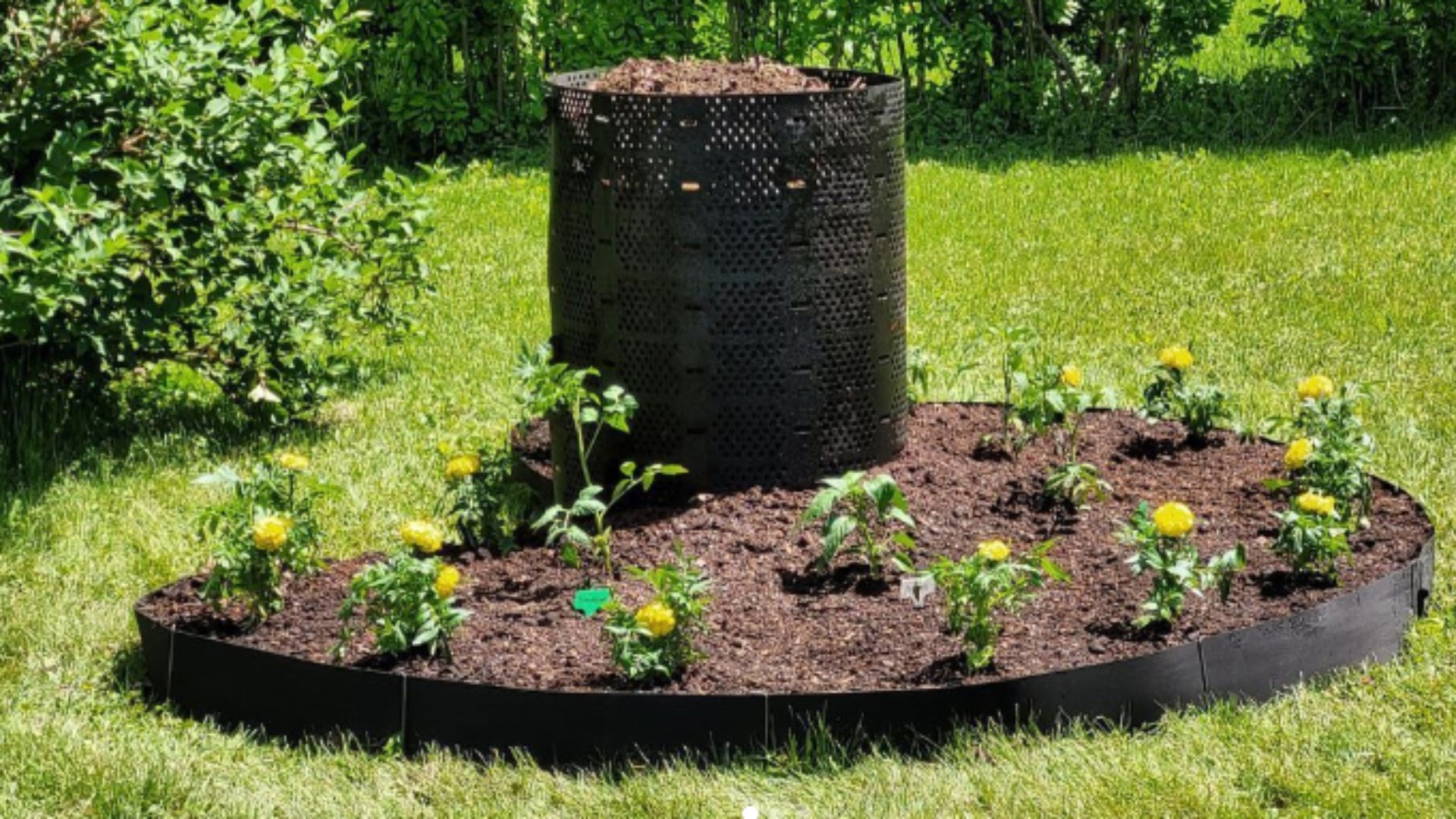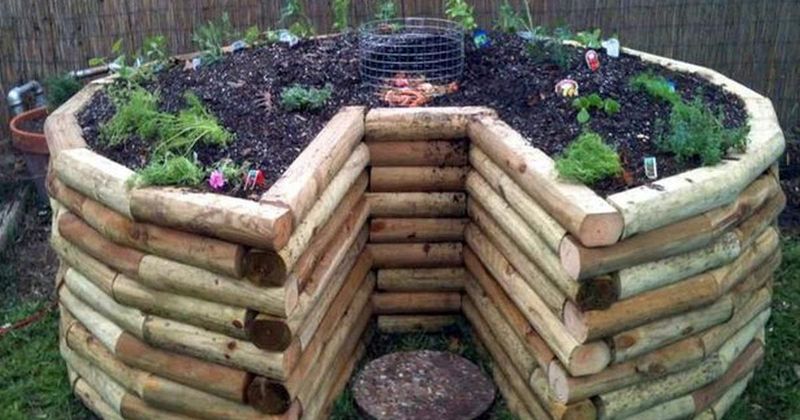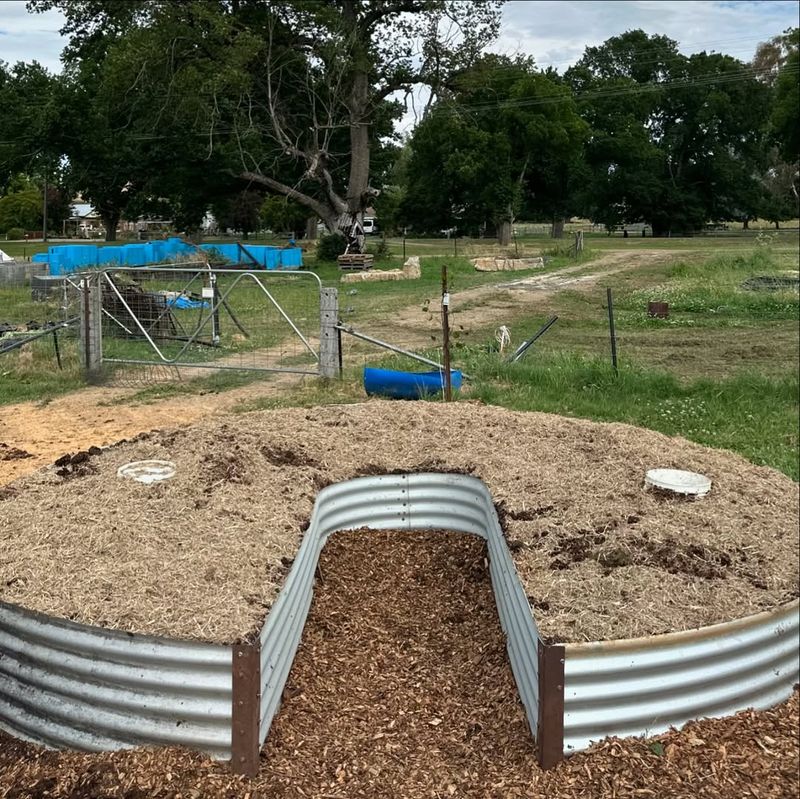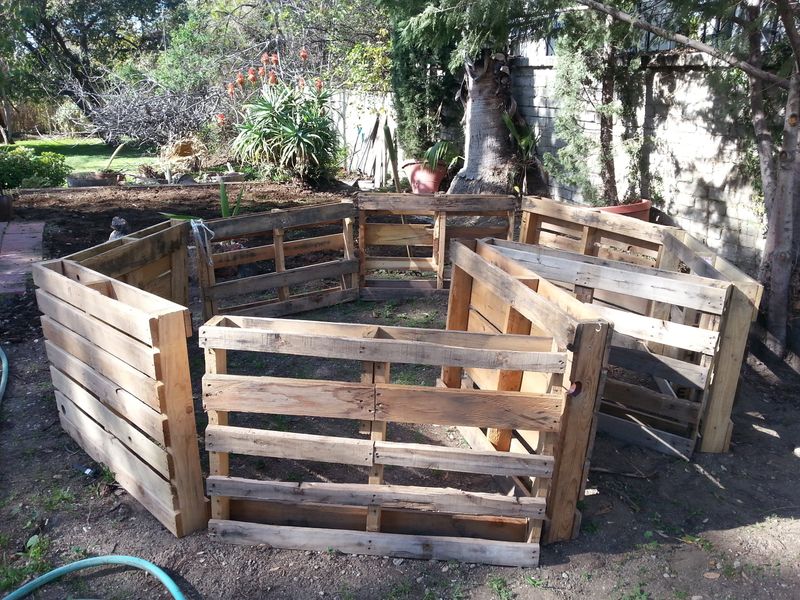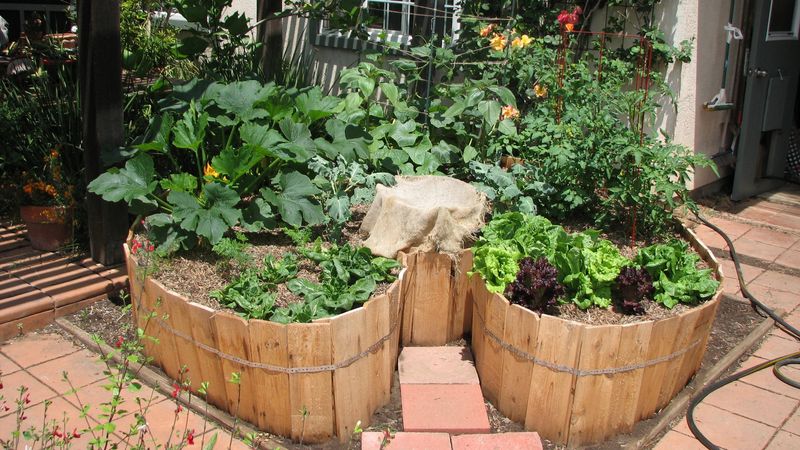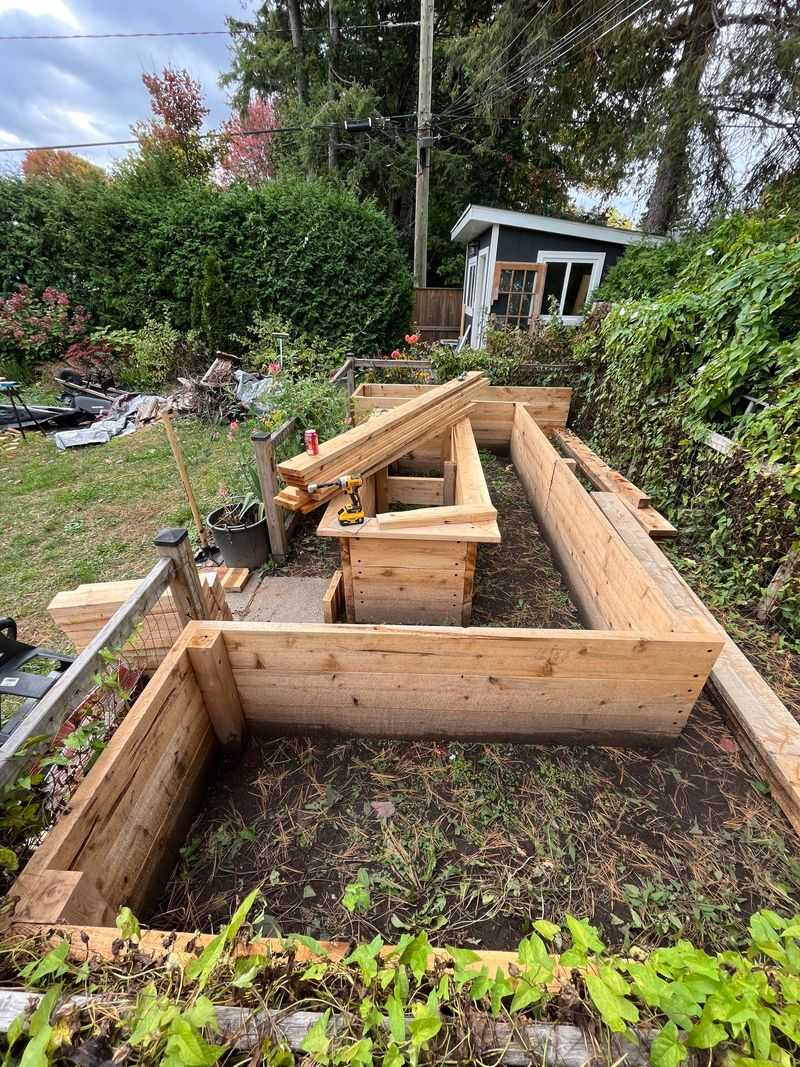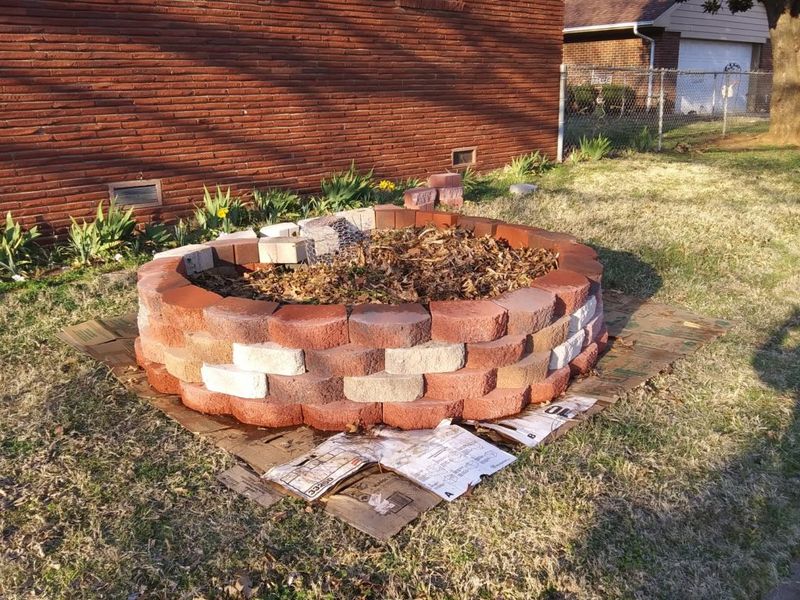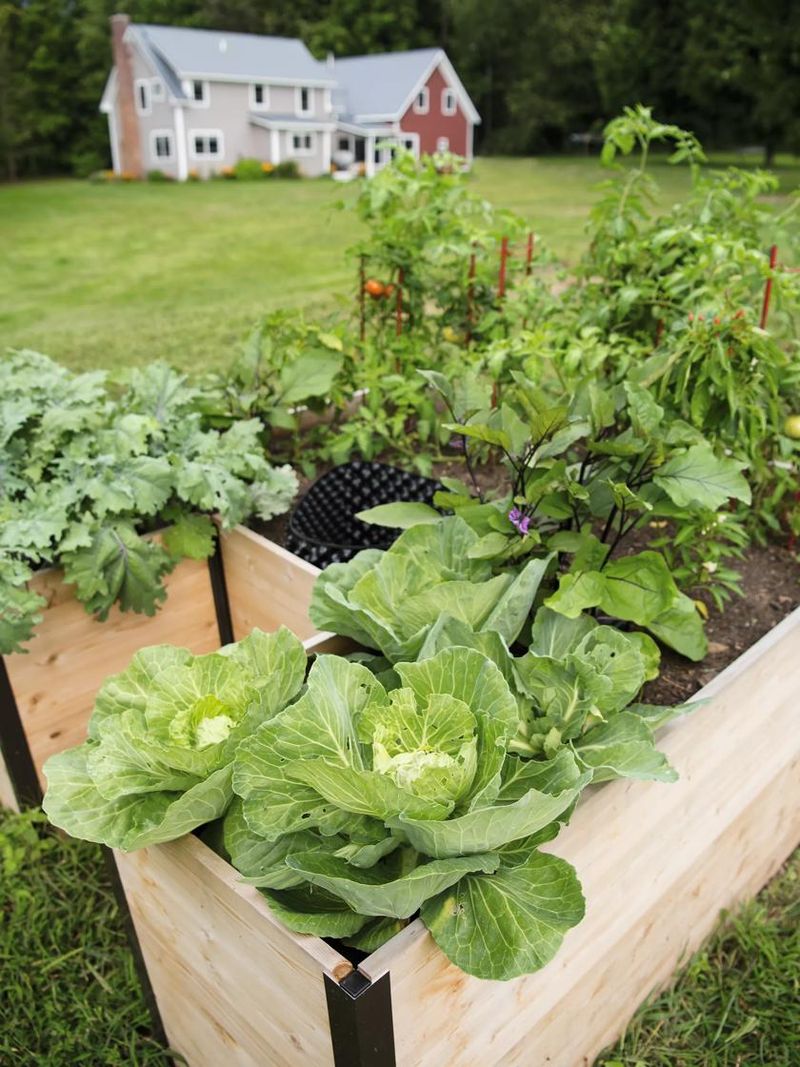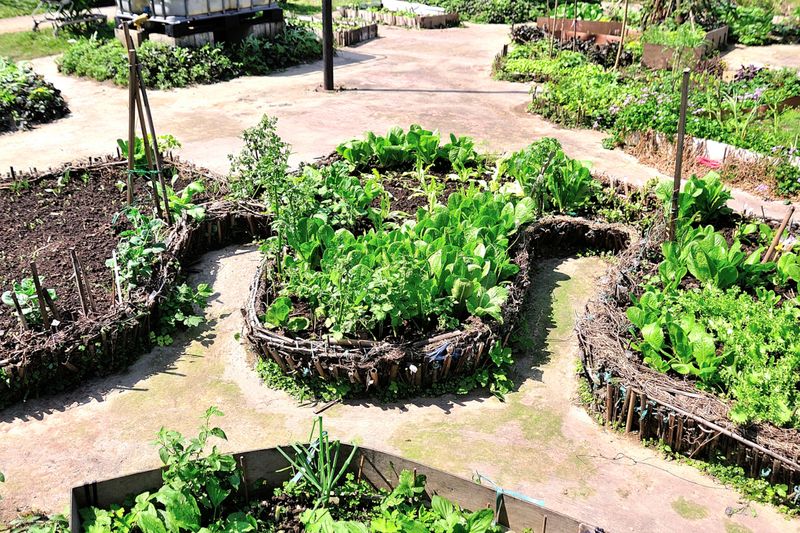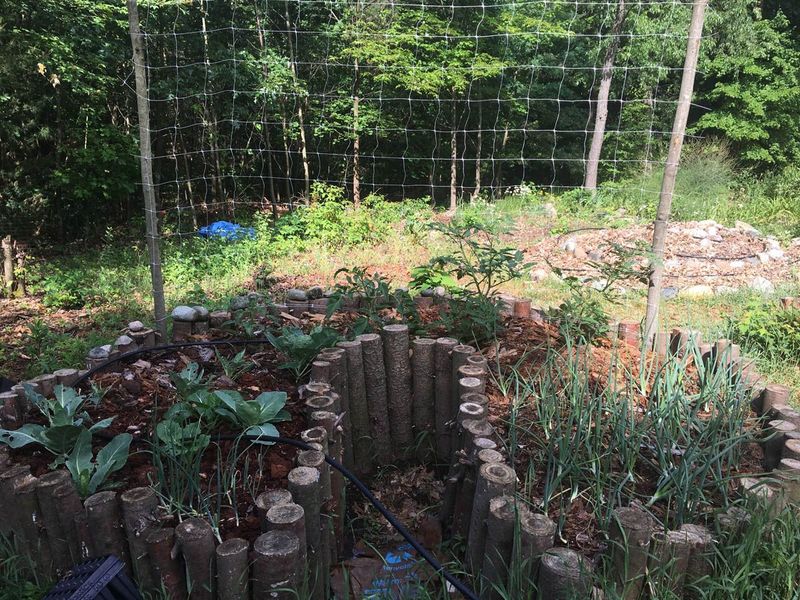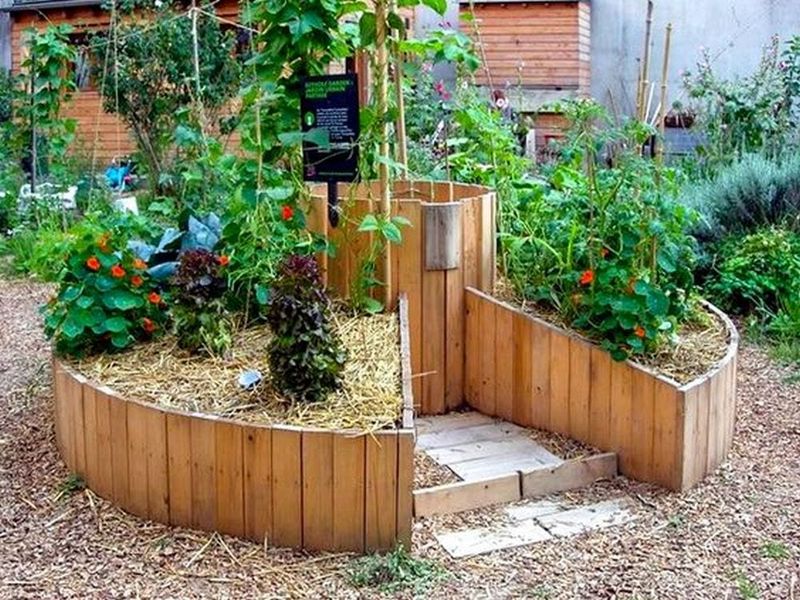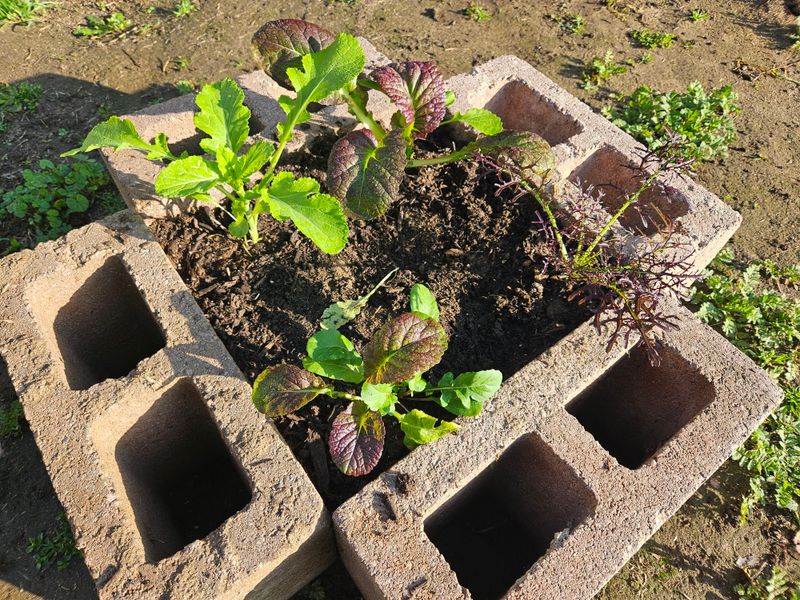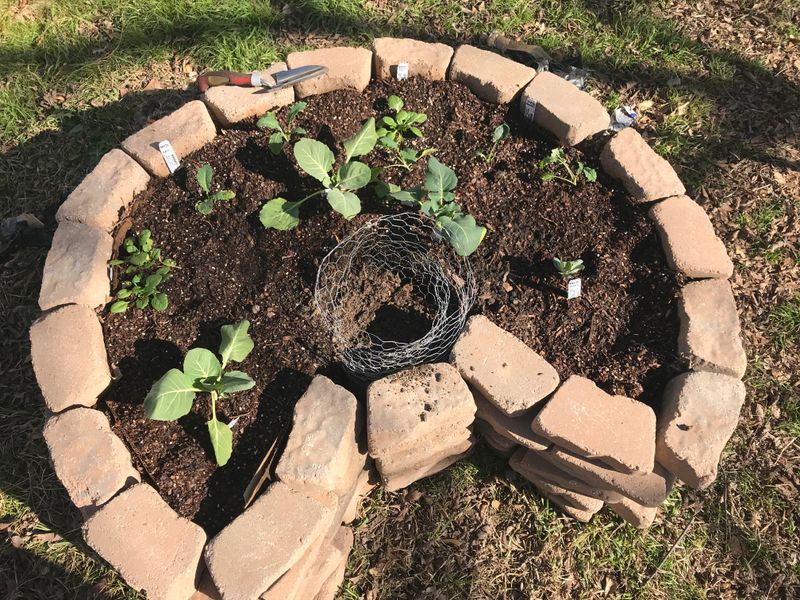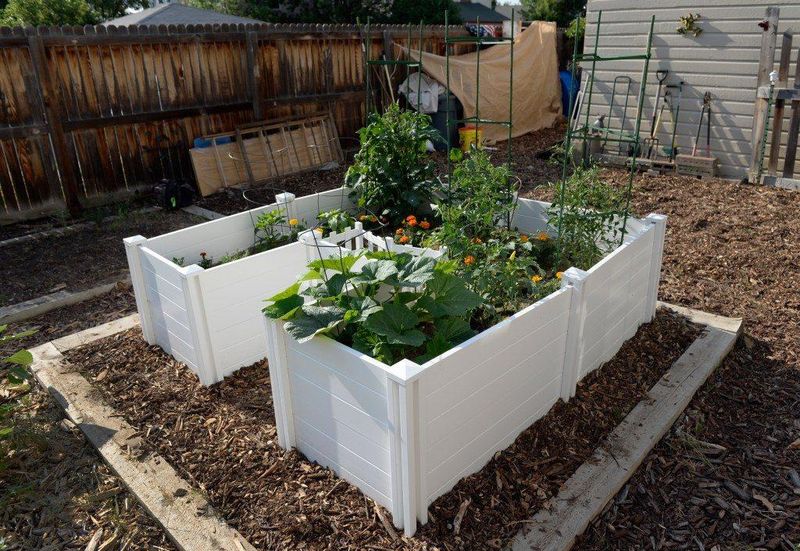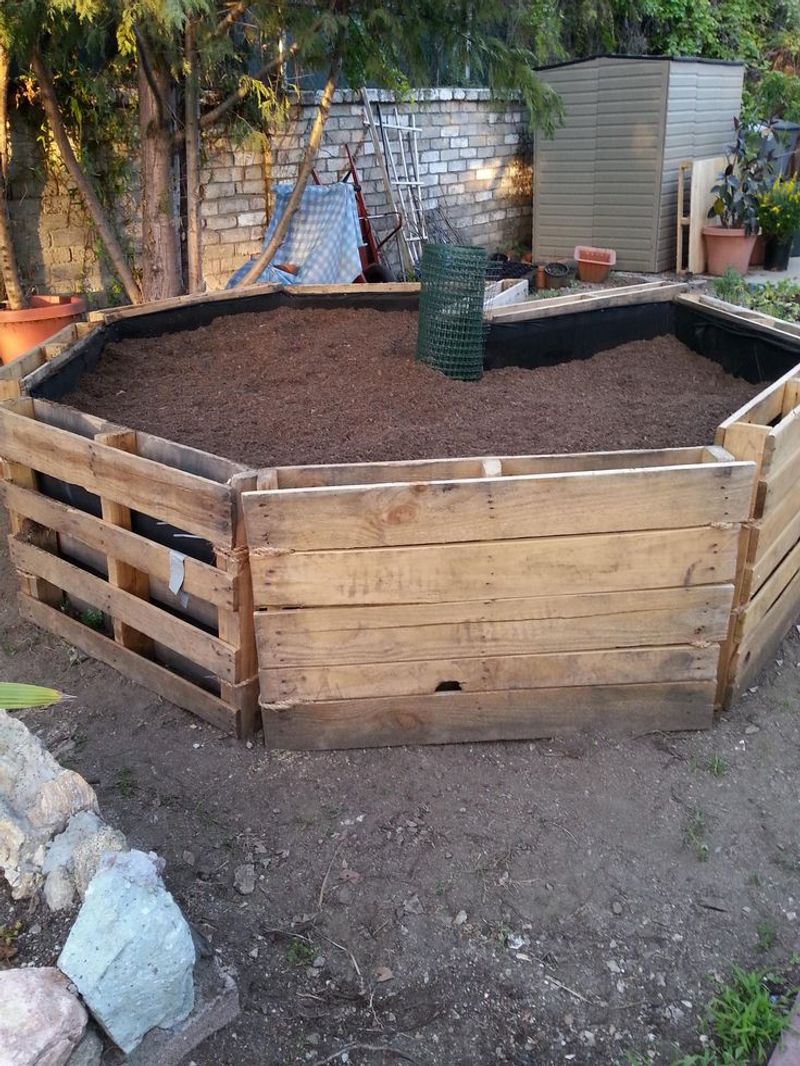I stumbled across keyhole gardens while searching for ways to boost my veggie yields without using tons of water—and I haven’t looked back since.
At first, the design looked a bit unusual, but once I saw how efficient and low-maintenance it was, I was hooked. The built-in compost basket in the center means your food scraps feed the soil directly, and the circular shape makes everything easy to reach. It’s like having a garden that takes care of itself.
If you’re planning your next garden upgrade or just want to try something different, a keyhole garden might be the game-changer your backyard needs.
1. Water-Saving Design
The central compost basket serves as both a nutrient source and an efficient watering system. When you pour water into this basket, it disperses throughout the garden bed, reaching plant roots without wasteful runoff.
This clever design can reduce water usage by up to 30% compared to conventional raised beds. For gardeners in drought-prone areas, this feature alone makes keyholes worth considering.
My water bill dropped noticeably after switching to this method, especially during those scorching summer months when traditional beds seemed to drink endlessly.
2. Built-In Composting System
Unlike standard raised beds, keyholes integrate composting directly into the garden structure. Kitchen scraps go straight into the center basket, eliminating separate compost pile maintenance.
The basket’s design allows worms and beneficial microorganisms to transport nutrients throughout the growing area.
This continuous feeding system means plants receive fresh nutrients throughout the growing season. Last summer, my tomatoes thrived despite minimal fertilizer applications, drawing steady nourishment from kitchen scraps I’d normally have thrown away.
3. Accessible For Limited Mobility
The notched “keyhole” entrance allows gardeners to reach the entire bed without stepping on soil. This design prevents compaction while making garden tasks manageable from a standing position.
For older gardeners or those with physical limitations, this accessibility factor can extend gardening years significantly. The raised height also reduces bending and strain.
A neighbor with arthritis switched to keyholes after struggling with traditional beds, and she now manages her entire vegetable garden independently again.
4. Improved Soil Temperature Regulation
The circular design creates a microclimate that moderates temperature extremes better than rectangular raised beds. The center compost generates heat during decomposition, extending growing seasons in cooler climates.
During winter months, this natural warming effect can protect sensitive plants from frost damage. Summer heat stress also diminishes as the design promotes better air circulation.
I’ve successfully grown lettuce weeks longer than my neighbor’s conventional garden, simply because the soil temperature stayed more consistent in my keyhole setup.
5. Space Efficiency
The circular layout maximizes growing space while minimizing materials needed for construction. You can fit more plants in a keyhole garden than in a rectangular bed of equal square footage.
Edge space—often wasted in traditional designs—becomes productive growing area in the keyhole format. The wedge-shaped planting sections naturally create different microclimates for various plant needs.
After measuring my harvests, I discovered my 6-foot keyhole produced nearly 20% more vegetables than my 4×8 raised bed, despite similar square footage.
6. Lower Construction Costs
Building a keyhole garden typically requires fewer materials than constructing multiple raised beds with the same growing capacity. The circular design needs less lumber or other edging materials.
Many keyhole gardens use found materials like stones, branches, or reclaimed bricks, making them budget-friendly options. Their single-unit construction eliminates the need for pathways between multiple beds.
When I tallied expenses, my keyhole garden cost roughly half what my neighbor spent on his equivalent-sized traditional raised bed system.
7. Drought Resistance
Originally developed for arid African climates, keyhole gardens excel in drought conditions. The sunken center and layered soil structure retain moisture far longer than conventional beds.
Plants in these gardens develop deeper root systems as they naturally grow toward the central water source. This adaptation helps them survive dry spells that would stress plants in standard raised beds.
During last summer’s three-week dry spell, I watered my keyhole garden just twice while my traditional beds needed attention every three days.
8. Soil Improvement Capabilities
The layered construction method creates ideal conditions for soil building. Starting with cardboard, then adding alternating layers of browns and greens mimics natural soil formation processes.
This approach transforms even poor native soil into rich growing medium within a single season. The decomposition happening at the center continuously rejuvenates the entire bed.
Starting with clay-heavy soil that nothing would grow in, my keyhole garden developed into black, crumbly loam within eight months—something that took years in my traditional beds.
9. Natural Pest Management
The diversity of plantings possible in a keyhole’s circular design creates natural pest resistance. Companion planting becomes intuitive as the wedge sections naturally separate plant families.
The central compost attracts beneficial insects that help control garden pests naturally. Many gardeners report fewer pest problems compared to traditional row or rectangular bed systems.
Since implementing my keyhole design, I haven’t needed to spray for aphids—the ladybugs and lacewings attracted to the diverse plantings keep them in check naturally.
10. Vertical Growing Potential
The raised structure creates perfect opportunities for vertical growing elements. Trellises, cages, or supports can be easily incorporated around the perimeter without blocking access.
Climbing plants like beans, cucumbers, and small melons thrive in this arrangement, dramatically increasing yield per square foot. The central access point makes harvesting vertical crops simpler than in traditional beds.
By adding simple bamboo supports to my keyhole garden, I doubled my bean harvest while maintaining easy access to all plants from the center path.
11. Extends Growing Season
The unique shape makes season extension easier than with rectangular beds. Adding hoops or covers over a circular bed creates a mini-greenhouse effect that’s structurally stronger than coverings on traditional beds.
The composting center generates heat that helps protect plants from early frosts. Many gardeners report harvesting frost-sensitive crops weeks longer from their keyhole gardens.
Adding a simple plastic cover to my keyhole extended my growing season by nearly a month on both ends, letting me harvest fresh greens well into December.
12. Reduced Weeding Requirements
The densely planted nature of keyhole gardens naturally suppresses weeds by limiting available light and space. The layered construction method typically includes cardboard or newspaper that acts as built-in weed suppression.
Access from the center means less trampling of soil, which often brings dormant weed seeds to the surface. Most gardeners report spending significantly less time weeding keyhole gardens.
I tracked my garden maintenance time last season and spent 75% less time weeding my keyhole garden compared to my traditional raised beds of similar size.
13. Better Nutrient Cycling
Nutrients flow naturally from the center outward, creating an efficient distribution system. Plants position their roots strategically to access this nutrient gradient according to their specific needs.
This natural cycling means less fertilizer is needed compared to conventional beds. The continuous decomposition in the center basket provides slow-release nutrition throughout the growing season.
Testing revealed my keyhole garden soil contained twice the available nitrogen of my traditional beds, despite receiving no additional fertilizer beyond kitchen scraps.
14. Community Building Potential
The unique design naturally attracts interest, making keyhole gardens excellent centerpieces for community projects. Their African origins and sustainability features make them perfect teaching tools for schools and community gardens.
Building one often becomes a group activity that brings neighbors together. The circular shape creates a natural gathering spot where people can learn about sustainable growing methods.
Our neighborhood keyhole garden project turned strangers into friends as we worked together, sharing both the labor and the eventual harvest from our collaborative creation.
15. Aesthetic Appeal
The circular design creates visual interest that rectangular beds lack. Many gardeners incorporate decorative elements like mosaic tiles, colored stones, or artistic edge materials into their keyhole gardens.
Their mandala-like appearance brings a meditative quality to garden spaces. The central basket can be crafted from natural materials that add rustic charm while remaining functional.
Visitors always comment on my keyhole garden first, despite it being just one element in my larger garden space—its unique shape simply draws the eye naturally.

